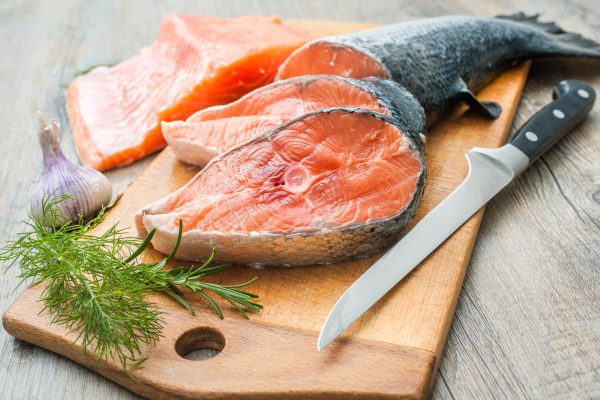Fillet knives: the definitive guide! Fillet knives are familiar to cooks and fishermen. This article covers fillet knives, their uses, benefits, and everything you need to know to buy one. Understand what a fillet knife is and how it may improve your cooking, whether you’re a chef or a home cook. Let’s jump in!
What is a Fillet Knife?
Fillet knives, often known as fish fillet knives, are designed to fillet fish and other fragile meats with precision and flexibility. This knife easily maneuvers around bones and tight spaces due to its small, tapering blade.
Fillet knives speed up the process of removing meat from bones while assuring precise cuts and minimal waste.
Why Choose a Fillet Knife?

Fish and delicate meat cooks benefit from using a fillet knife. Why use a fillet knife:
Precision filleting: Fillet knives precisely fillet fish and other delicate meats. Their small, flexible blades allow precision cutting around bones, scales, and joints. This reduces waste while removing meat from bones.
Flexible blade: Fillet knives have thin, flexible blades that easily follow fish or meat shapes. Flexibility lets you keep contact with the bone and remove flesh efficiently. It also reduces meat damage by allowing smoother, gliding movements.
Meat separation: A fillet knife’s thin, pointed blade easily separates meat from skin or bones. The fillet knife makes deboning fish and fowl easy.
Reduces waste: Fillet knives reduce meat waste during preparation. The blade’s accuracy and suppleness let you follow the fish or meat’s contours for cleaner cuts and less trimming.
Versatility: Fillet knives are used for more than fish. Thin, sharp blades allow careful slicing and trimming of fruits, vegetables, and boneless meats. Fillet knives may devein shrimp, remove silver skin from meats, and slice carpaccio thinly.
Control and maneuverability: Fillet knives allow precise cuts without unnecessary force. The knife’s ergonomic grip and balanced weight distribution improve handling, reduce accidents, and optimize performance.
Specialty options: Fillet knives exist in numerous sizes and styles for different needs. Choose a fillet knife with a blade length, handle material, and handle form that suits your needs.
Different Types of Fillet Knives

Fillet knives have different features and uses. Explore the most prevalent types:
Fillet Knife
A 6–9-inch fillet knife has a small, flexible blade. Anglers and cooks prefer it for its versatility and mobility. This fillet knife can handle many fish sizes and filleting methods.
Fillet Knife
Electric fillet knives are convenient and fast. These motorized knives make filleting faster and easier. Commercial fisherman and fish processors prefer electric fillet knives.
Fillet Knife
Curved fillet knives improve precision and control. The curvature increases blade-to-fish contact for smoother, more efficient cuts. This fillet knife is ideal for round or thick-skinned fish.
Gut Knife Bait
Gut knives are strong and have thicker blades for rigorous cleaning. Anglers use them to clean fish quickly and preserve flavor.
How to Choose the Right Fillet Knife?

The appropriate fillet knife can improve your cooking. Consider these variables before choosing:
Flexible Blade Length
Fillet knives must be flexible and long. A 6-inch blade is better for delicate filleting of tiny fish. For larger fish or longer strokes, an 8-9-inch blade is best. Flexible blades are best for fragile fish, whereas stiffer blades are better for tougher or larger species.
Blade Material
Fillet knives perform and last based on blade material. Stainless steel blades are popular due to their rust-resistance and little maintenance.
Chefs choose high-carbon stainless steel blades for their longevity and sharpness. Non-stick blades on some fillet knives prevent food from sticking and make cleaning easier.
Handle Comfort
Long-term fillet knife use requires a comfortable grip. Find a knife with a wood, plastic, or rubber ergonomic handle. Even when wet, the handle should grasp securely for filleting safety.
Brand Reputation
The brand’s reputation and reviews can reveal the fillet knife’s quality and performance. Read consumer reviews of well-known knife manufacturers to assess quality and durability.
Questions (FAQs)
Fillet knife blade flexibility—what’s best?
Fish kind and filleting method determine blade flexibility. A flexible blade is best for delicate fish with thin bones to cut precisely and waste little meat.
However, stiffer blades may help control and stabilize harder fish or chores that demand greater force.
How do I clean and maintain my fillet knife?
Fillet knives must be cleaned and maintained to last. Wash the knife with warm soapy water and a soft sponge or towel after use. Avoid damaging abrasives.
To prevent rusting, dry the knife before keeping it. Keep the blade sharp with an honing rod or stone.
Is a fillet knife versatile?
Fillet knives can do more than fillet fish. They can debone poultry, trim fat, slice fruits and vegetables, and peel delicately.
Electric fillet knives for beginners?
Electric fillet knives are easier and more consistent for novices. To avoid mishaps and overcutting, use caution and good technique. Beginners should practice filleting and learn the knife’s operation.
Fillet knife sharpening: how often?
Depends on usage and blade quality. Sharpen your fillet knife every few months or when its cutting performance decreases. Honing with a rod between sharpenings helps retain sharpness.
A fillet knife for different meats?
Fish fillet knives can also be used for other meats. They can remove silver skin from meat and debone little poultry because of their thin, flexible blades. For larger pieces of meat or difficult jobs, use a stronger knife built for those reasons.
Conclusion
In conclusion, professional chefs and home cooks who appreciate precision and refinement need a fillet knife. A fillet knife’s thin, flexible blade lets you cut fish cleanly and precisely, increasing flesh yield and dish presentation.
Choose a fillet knife based on blade length, flexibility, handle comfort, and brand. With appropriate care, your fillet knife may last a lifetime and improve your cooking skills.
Whether you’re a professional chef or a passionate home cook, investing in a high-quality fillet knife will improve your cooking experience and ensure great results every time.
